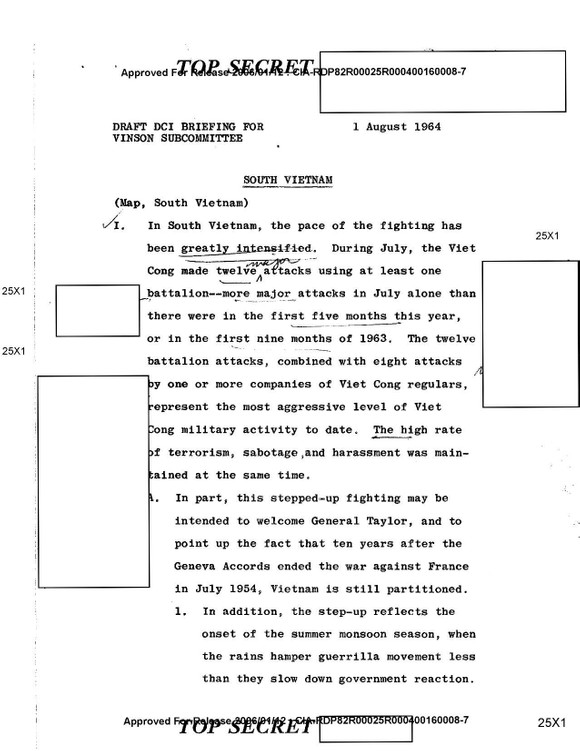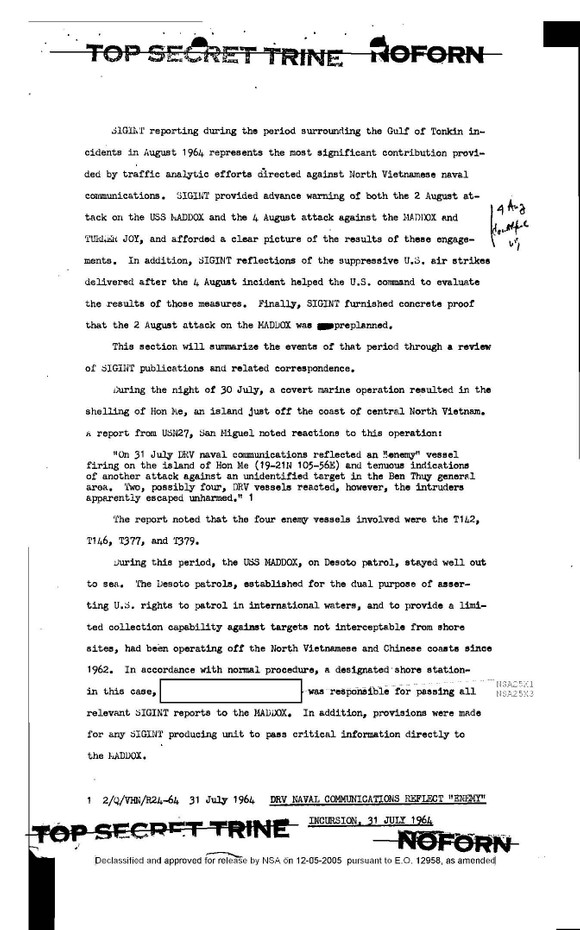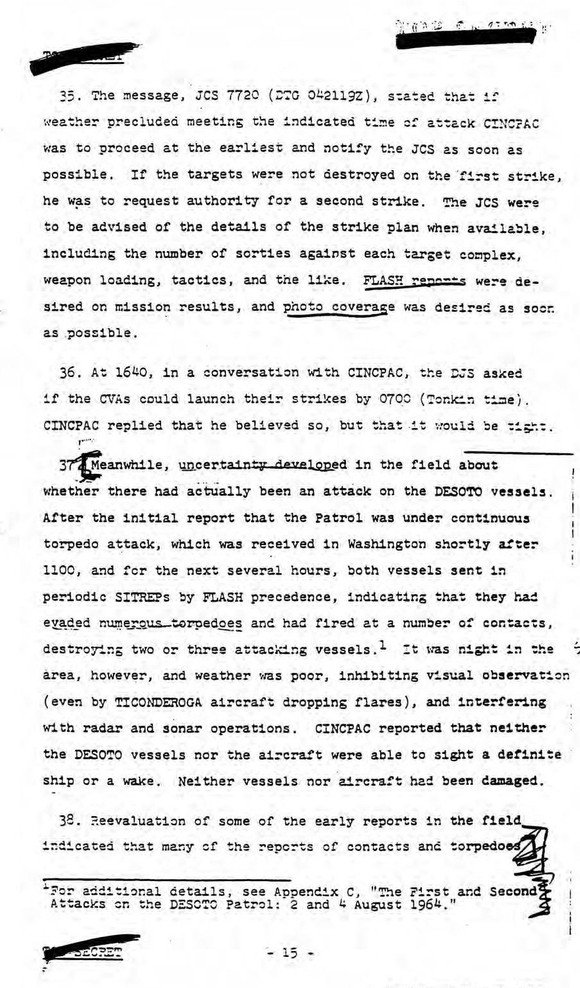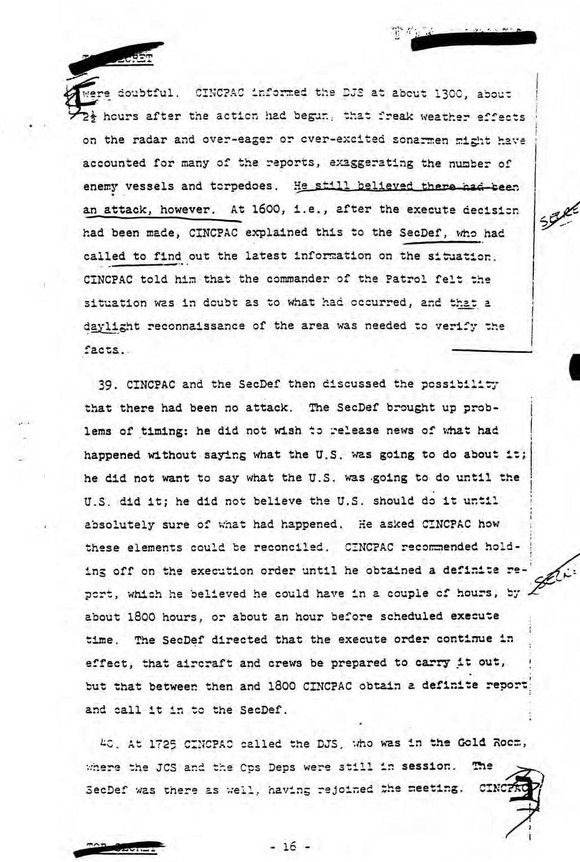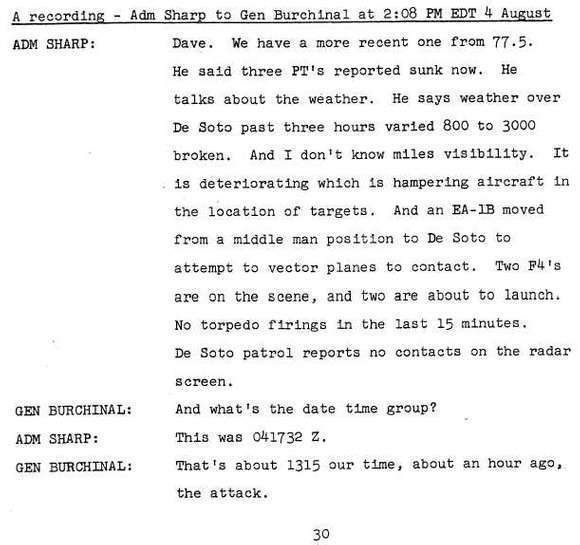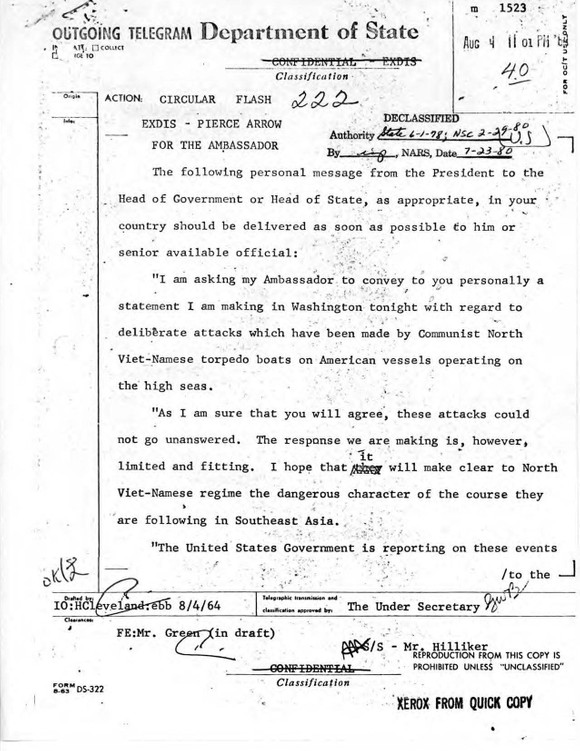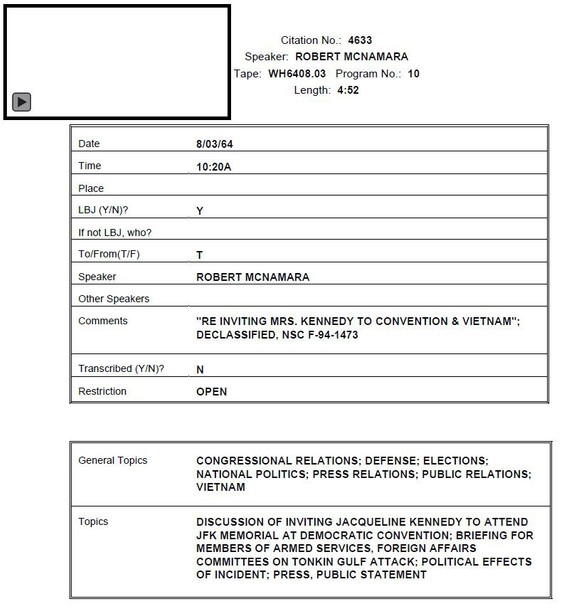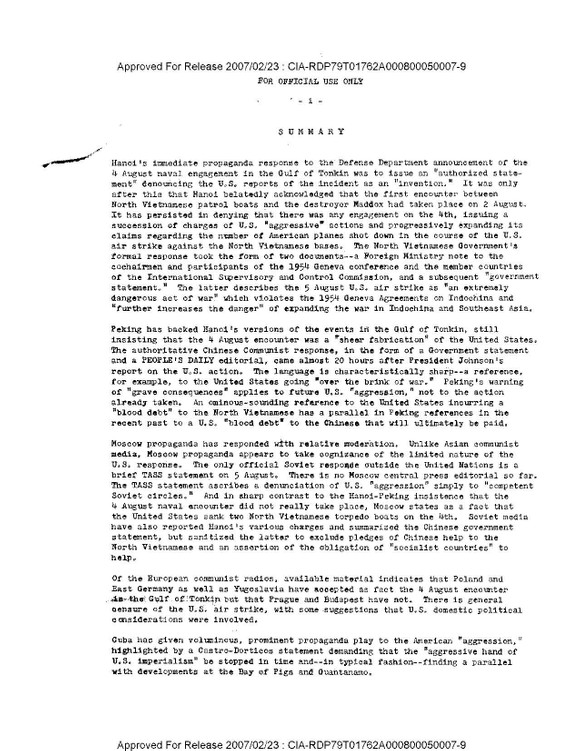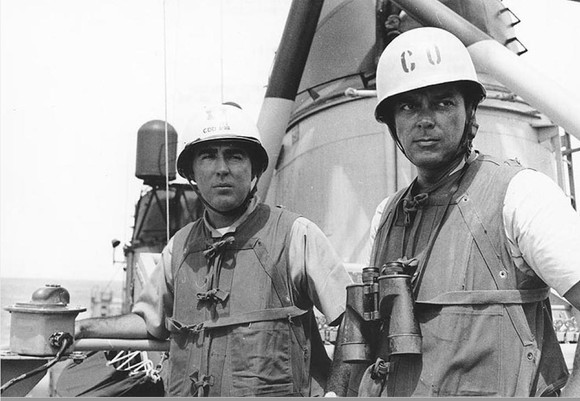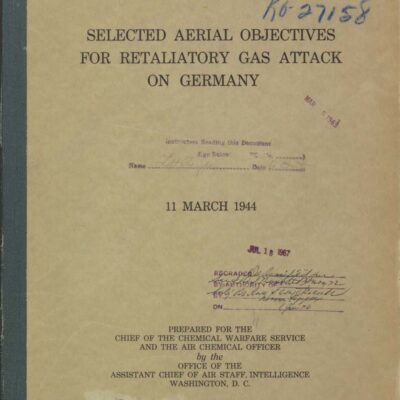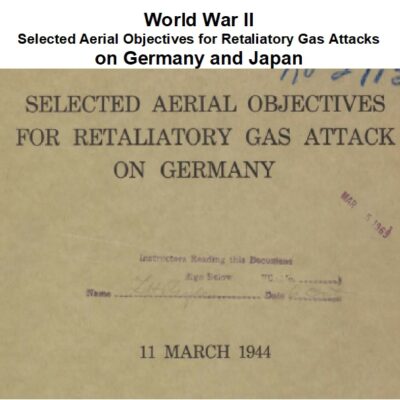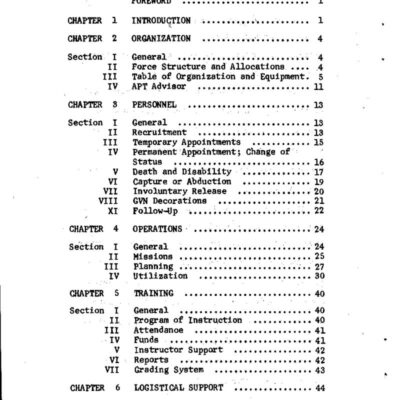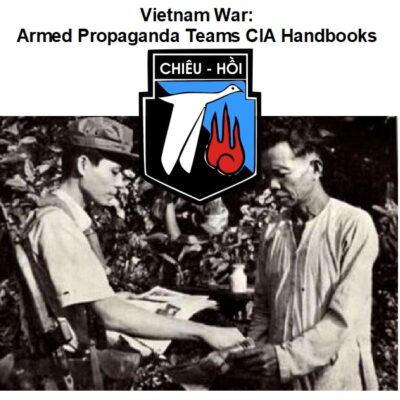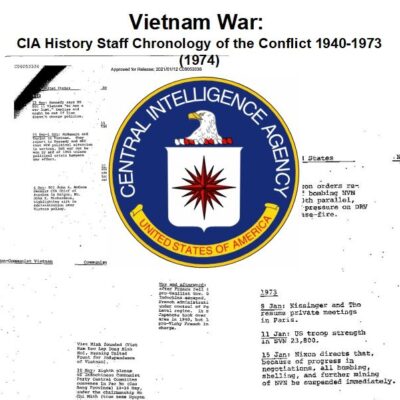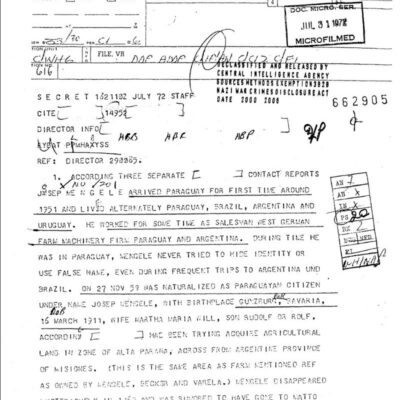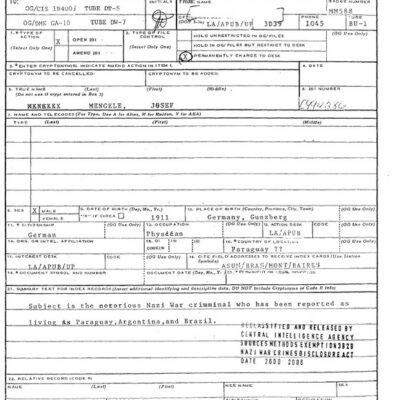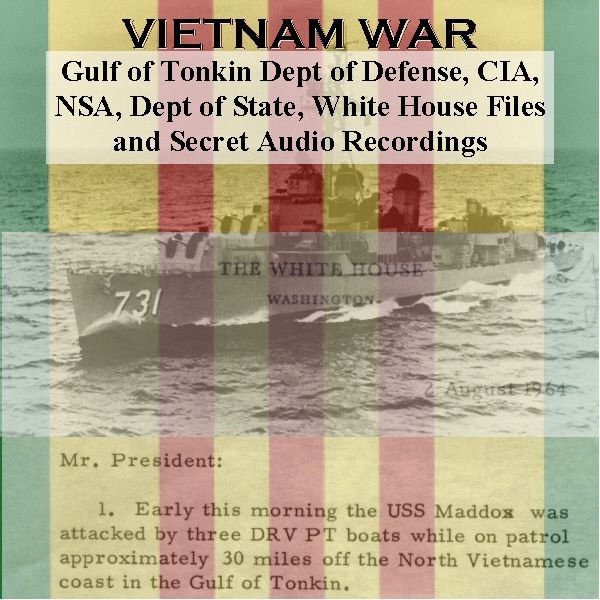
Vietnam War: Gulf of Tonkin Incident DOD, CIA, NSA, State Dept
$19.50
Description
Gulf of Tonkin Incident: Timeline and Key Figures
Timeline of Main Events:
Early 1964:
- President Lyndon B. Johnson and Secretary of Defense Robert S. McNamara become concerned about the deteriorating situation in South Vietnam against Viet Cong guerrillas.
- The US decides to exert military pressure on North Vietnam to cease its support for the Viet Cong.
- The US Navy arms the Republic of Vietnam Navy with Norwegian-built fast patrol boats (PTFs), trains their crews, and maintains the vessels in Danang.
- Covert Operation 34A (OPLAN 34-A) is initiated: Designed and directed by American officials in Washington and Saigon, South Vietnamese PTFs bombard North Vietnamese radar stations and land commandos for sabotage missions. Many missions fail due to poor intelligence.
- Washington directs the Navy to focus more on the North Vietnamese coast through the long-standing Desoto Patrol operation, using destroyers for intelligence gathering outside territorial waters.
Late July/Early August 1964 (Prior to August 2nd):
- South Vietnamese PTF forces conduct bombardments against targets along the coast of North Vietnam, south of the area where the USS Maddox is patrolling.
August 2, 1964:
- The destroyer USS Maddox, under the operational control of Captain John J. Herrick, is on a Desoto Patrol intelligence-gathering mission along the coast of North Vietnam in the Gulf of Tonkin.
- North Vietnam, aware of the US connection to Operation 34A, directs its navy to attack the USS Maddox.
- In the afternoon, three North Vietnamese Soviet-built P-4 motor torpedo boats attack the USS Maddox.
- Torpedoes miss the Maddox, but one enemy deck gun round hits the ship’s superstructure.
- The USS Maddox returns fire, hitting the attacking vessels.
- F-8 Crusader jets from the aircraft carrier USS Ticonderoga strafe the P-4 boats, leaving one dead in the water and on fire.
- The USS Maddox withdraws towards the mouth of the Gulf of Tonkin and supporting naval forces.
- President Johnson and his advisors are surprised by North Vietnam’s response.
- President Johnson, Admiral Ulysses S. Grant Sharp, and Admiral Thomas H. Moorer decide the US must respond.
- The destroyer USS Turner Joy is dispatched to reinforce the USS Maddox, and Captain Herrick is ordered to continue the Desoto Patrol.
August 3, 1964:
- President Johnson speaks with Secretary of Defense Robert S. McNamara by telephone, focusing on the political implications of the August 2nd incident and the need to brief congressional leaders. McNamara mentions the connection to OPLAN 34-A.
August 4, 1964:
- The USS Maddox and USS Turner Joy report making contact and being under attack by fast crafts far out at sea during the night.
- Naval officers and US leaders in Washington, based on special intelligence and ship reports, believe a second North Vietnamese attack has occurred.
- Later analysis, including that by NSA historian Robert J. Hanyok, concludes that the August 4th attack did not actually occur. Hanyok suggests an effort to make intelligence fit the claim of an attack.
- President Johnson calls his Republican presidential opponent, Barry Goldwater, to inform him of his decisions regarding retaliation for the reported Gulf of Tonkin attack. Goldwater expresses his support.
August 5, 1964:
- President Johnson orders Seventh Fleet carrier forces to launch retaliatory air strikes against North Vietnam.
- Aircraft from the USS Ticonderoga and USS Constellation attack an oil storage facility at Vinh and damage or sink approximately 30 North Vietnamese naval vessels.
- President Johnson holds a White House Staff Meeting at 8:00 a.m. regarding the incident.
August 7, 1964:
- The US Congress overwhelmingly passes the Gulf of Tonkin Resolution, granting President Johnson broad authority to use military force in Southeast Asia as he sees fit against the Vietnamese Communists.
Early 1965:
- President Johnson orders the deployment of major US ground, air, and naval forces to South Vietnam, marking a significant escalation of American involvement in the Vietnam War.
2000-2001:
- NSA historian Robert J. Hanyok reviews classified material and concludes that while the August 2nd attack on the USS Maddox did occur, the reported August 4th attack did not. His findings are published in the NSA’s secret journal, Cryptologic Quarterly.
2006:
- The NSA releases many previously secret documents related to the Gulf of Tonkin incident, acknowledging the considerable controversy surrounding it and stating its intention to make information available for public analysis.
April 2015:
- Some of the material included in the collection was declassified.
Cast of Characters:
- Lyndon B. Johnson: The President of the United States during the Gulf of Tonkin Incident. He believed in putting military pressure on North Vietnam and ultimately used the incident to gain Congressional approval for escalating US involvement in the Vietnam War.
- Robert S. McNamara: The Secretary of Defense under President Johnson. He was a key advisor on Vietnam policy and played a significant role in the decisions surrounding the Gulf of Tonkin Incident and the subsequent escalation. He initially maintained the narrative of the second attack but later expressed doubts.
- Ho Chi Minh: The leader of North Vietnam (the Democratic Republic of Vietnam). His government was the target of US military pressure and supported the Viet Cong in South Vietnam.
- John J. Herrick: The Captain of the USS Maddox during the Gulf of Tonkin Incident. He was in operational control of the destroyer during the August 2nd incident and the subsequent patrol.
- Ulysses S. Grant Sharp: The commander of American military forces in the Pacific. He was involved in the decision to reinforce the USS Maddox after the initial attack and in planning the US response.
- Thomas H. Moorer: The commander of the U.S. Pacific Fleet. He also played a role in the decisions made by the US military leadership in response to the Gulf of Tonkin incidents.
- Robert J. Hanyok: A historian with the National Security Agency (NSA). His review of classified intelligence led him to conclude that the August 4th attack on the USS Maddox and USS Turner Joy did not occur, contradicting the Johnson administration’s claims.
- Barry Goldwater: The Republican candidate for President in 1964. President Johnson informed him of the US response to the Gulf of Tonkin incident, and Goldwater expressed his support.
- Dean Rusk: The Secretary of State under President Johnson. He was involved in the diplomatic and political aspects of the Gulf of Tonkin Incident and the subsequent resolution.
- McGeorge Bundy: President Johnson’s National Security Advisor. He played a crucial role in advising the President on national security matters, including the response to the events in the Gulf of Tonkin.
- Cyrus Vance: Served as Deputy Secretary of Defense later in the Vietnam War (after the Gulf of Tonkin Incident, but interviewed for the LBJ Library).
- Roswell L. Gilpatric: Served as Deputy Secretary of Defense prior to the Gulf of Tonkin Incident (interviewed for the LBJ Library).
- Lawrence F. O’Brien: Special Assistant to the President for Congressional Relations. He was involved in the process of securing Congressional passage of the Gulf of Tonkin Resolution.
- Aaron E. Henry: President of the Mississippi Conference of Branches of the NAACP (interviewed for the LBJ Library, though his connection to the Gulf of Tonkin incident in the provided text is not explicit).
- George Smathers, George Reedy, Larry O’Brien, Walter Jenkins, Bill Moyers, Edward Kennedy, Anatoly Dobrynin, Richard Russell, Drew Pearson, Rusell Long: Individuals who participated in the secretly recorded White House telephone conversations with President Johnson regarding the Gulf of Tonkin Incident and Resolution, indicating the wide range of people involved in discussions and decisions related to the event.
- General Wheeler, General McCutcheon, General Burchinal, Admiral Mustin, Commander Hattaway, General Wisman: Participants in the recorded command and control conversations within the Department of Defense on August 4th and 5th, 1964, highlighting the military chain of command involved in responding to the reported attacks.
Vietnam War: Gulf of Tonkin Incident DOD, CIA, NSA, State Dept., White House Files & Secret Audio
5,122 pages of Department of Defense, CIA, State Department, National Security Agency and White House files, and twelve and a half hours of secretly recorded President Lyndon Johnson White House telephone conversations, related to the Gulf of Tonkin incident and the Gulf of Tonkin Resolution.
A clash between naval forces of the United States and the Democratic Republic of Vietnam (North Vietnam) in August 1964 marked a significant turning point in the Cold War struggle for Southeast Asia and the future of the Vietnam War. President Lyndon B. Johnson and his Secretary of Defense, Robert S. McNamara, grew concerned in early 1964 that the Republic of Vietnam (South Vietnam), America’s ally, was losing its fight against Communist Viet Cong guerrillas. The American leaders decided to put military pressure on Ho Chi Minh’s North Vietnamese government in Hanoi, which directed and provided military support for the Communists in the South.
President Johnson, Robert McNamara, and their advisors believed that naval forces could be used to help compel Ho Chi Minh to cease his support for the Viet Cong. The United States Navy armed the Republic of Vietnam Navy with Norwegian-built fast patrol boats (PTF), trained their Vietnamese crews, and maintained the vessels at Danang in northern South Vietnam. In covert operation 34A, also known as OPLAN 34-A, which was designed and directed by American officials in Washington and Saigon, the PTFs bombarded radar stations on the coast of North Vietnam and landed South Vietnamese commandoes to destroy bridges and other military targets. Many of the missions, however, failed for lack of good intelligence about the North’s key military installations, defensive forces, and operating methods.
Consequently, Washington ordered the Navy to focus more attention on the coast of North Vietnam in its longstanding Desoto Patrol operation. The Desoto Patrol employed destroyers in intelligence-gathering missions outside the internationally recognized territorial waters and along the coasts of the Soviet Union, China, North Korea, and North Vietnam. In early August of 1964, the destroyer USS Maddox, under the operational control of Captain John J. Herrick, steamed along the coast of North Vietnam in the Gulf of Tonkin, gathering various types of intelligence. Shortly before, the South Vietnamese PTF force had bombarded targets further to the south of USS Maddox’s patrol area.
North Vietnam’s leaders, who knew from their own intelligence sources about the American connection to Operation 34A, were determined not to bend to U.S. pressure. Hanoi directed its navy, which had not been able to catch the fast PTFs, to attack the slower American destroyer. On the afternoon of 2 August, the Communists dispatched three Soviet-built P-4 motor torpedo boats against the USS Maddox. Torpedoes launched from the P-4s missed their mark. Only one round from enemy deck guns hit the destroyer; it lodged in the ship’s superstructure. The North Vietnamese naval vessels were not so fortunate. Shellfire from Maddox hit the attackers. Then F-8 Crusader jets dispatched from the aircraft carrier USS Ticonderoga (CVA 14) strafed all three P-4s and left one boat dead in the water and on fire. The action over, the USS Maddox steamed toward the mouth of the Gulf of Tonkin and supporting naval forces.
President Johnson and his national security advisors were surprised that Ho Chi Minh had not only failed to buckle under U.S. military pressure but had reacted to it in such a bold way. President Johnson, Admiral Ulysses S. Grant Sharp, the commander of American military forces in the Pacific, and Admiral Thomas H. Moorer, commander of the U.S. Pacific Fleet, decided that the United States could not retreat from this clear challenge. They reinforced the USS Maddox with the destroyer USS Turner Joy (DD 951) and directed Captain Herrick to continue his intelligence-gathering mission off North Vietnam with the two naval vessels.
On the night of 4 August 1964, the warships reported making contact and then being attacked by several fast crafts far out to sea. Officers in the naval chain of command and U.S. leaders in Washington were persuaded by the interpretation of special intelligence and reports from the ships, that North Vietnamese naval forces had attacked the two destroyers. More recent analysis of that data and additional information gathered on the 4 August episode, now makes it clear that North Vietnamese naval forces did not attack Maddox and Turner Joy that night in the summer of 1964.
In response to the actual attack of 2 August and the suspected attack of 4 August, President Johnson ordered Seventh Fleet carrier forces to launch retaliatory strikes against North Vietnam. On 5 August, aircraft from carriers Ticonderoga and USS Constellation (CVA 64) destroyed an oil storage facility at Vinh and damaged or sank about 30 North Vietnamese naval vessels in port or along the coast. Of greater significance, on 7 August the U.S. Congress overwhelmingly passed the so-called Tonkin Gulf Resolution, which enabled President Johnson to employ military force as he saw fit against the Vietnamese Communists. In the first months of 1965, the President ordered the deployment to South Vietnam of major U.S. ground, air, and naval forces. Thus, began a new phase in America’s involvement in the Vietnam War.
In 2000, National Security Agency historian Robert J. Hanyok after reviewing then classified material on the incident came to the conclusion that the August 4 attack never occurred. His history on the matter is included in this collection.
Some of the material included in this set was not declassified until April 2015.
CIA Files
419 pages of CIA files from before and after the Gulf of Tonkin Incident dealing with possible reactions from the North Vietnamese, China, and the Soviet Union to military actions taken in the region by the United States. Contains presidential daily briefs, memorandum, situation reports and central intelligence bulletins.
National Security Agency (NSA) Files
1,922 pages of NSA files made up of histories, chronologies, signals intelligence [SIGINT] reports, and oral history interviews.
Includes NSA historian Robert J. Hanyok’s article “Skunks, Bogies, Silent Hounds, and the Flying Fish: The Gulf of Tonkin Mystery, 2-4 August 1964,” from the NSA secret journal Cryptologic Quarterly published in 2001.
Hanyok concluded that his study of SIGINT confirms the USS Maddox was attacked by North Vietnamese torpedo boats on August 2, 1964.
According to Hanyok, a second attack on August 4, 1964 did not occur despite claims to the contrary by the Johnson administration. Hanyok wrote that, “The overwhelming body of reports, if used, would have told the story that no attack occurred.” He further states that there was, “an active effort to make SIGINT fit the claim of what happened during the evening of 4 August in the Gulf of Tonkin.”
In 2006 when the NSA released many documents it kept secret on the Gulf of Tonkin incident, it released the following statement:
“The Gulf of Tonkin incident, like others in our nation’s history, has become the center of considerable controversy and debate. It is not NSA’s intention to prove or disprove any one set of conclusions, many of which can be drawn from a thorough review of this material. Instead, through these public releases, we intend to make as much information as possible available for the many scholars, historians, academia, and members of the general public who find interest in analyzing the information and forming their own conclusions.”
Department of Defense Documents
211 pages of Department of Defense Documents including:
Critical Incident Report No.7, Command and Control of the Tonkin Gulf Incident. This report produced by the Department of Defense’s Office of the Director of Defense Research and Engineering Weapons Systems Evaluation group, presents an account of command and control aspects of the Tonkin Gulf incident. The Report covers basic command decisions and actions during the incident; operations in connection with it and the communications support and information flow that were involved in its management. The report includes appendices covering important policy and planning actions which preceded the incident, the August 2 and 4 incidents, message and telephone traffic relating to it; and an outline chronology of the main events. The overall study is based upon an analysis of messages, logs, recorded telephone traffic, and other documentary materials.
Department of Defense Gulf of Tonkin Command and Control Conversation Transcripts. 75 pages of transcripts of recorded conversations taking place on August 4th and 5th, between the command and control top echelon. Among the participants are Robert McNamara, Pacific theater commander Admiral Sharp, General Wheeler, General McCutcheon, General Burchinal, Admiral Mustin, Commander Hattaway, and General Wisman.
President Lyndon B. Johnson Administration White House Documents
2,021 pages wide ranging documents dealing with the Gulf of Tonkin incident and the decisions made by President Johnson.
Key White House documents include: A cable regarding the attack on the USS Maddox in the Gulf of Tonkin. This cable contains a chronology of the reported second attack by the North Vietnamese on the USS Maddox while it was on Desoto Patrol in the Gulf of Tonkin on August 4, 1964. The text of the message also details the response by the USS Maddox and the USS C. Turner Joy.
A time chart for U.S. reprisal air attacks following the Tonkin Gulf Incidents. This chart records the dates and times that U.S. aircraft departed from the USS Ticonderoga and the USS Constellation, the times of air strikes on North Vietnam in response to the attack on the USS Maddox in the Gulf of Tonkin, and the time of President Lyndon B. Johnson’s address to the nation.
Maps of the USS Maddox Incident. These maps depicts the patrol routes of the USS Maddox and the USS C. Turner Joy in the Gulf of Tonkin from August 2-7, 1964. President’s Daily Diary Entries. These entries record basic information about the president’s activities from August 2, 1964 through August 4, 1964.
The memorandum for the record of White House Staff Meeting, August 5, 1964, 8 a.m.
Includes many incident and policy documents to or from members of the Joint Chiefs of Staff, National Security Council, Department of State, and LBJ advisors.
President Lyndon Johnson Secret White House Telephone Recordings
Twelve and a half hours of secret White House telephone recordings, recorded between August 3, 1964 and March 3 1966, dealing with the Gulf of Tonkin Incident and the Gulf of Tonkin Resolution. Among the participants are Robert McNamara, George Smathers, George Reedy, Dean Rusk, Larry O’Brien, Barry Goldwater, McGeorge Bundy, Walter Jenkins, Bill Moyers, Edward Kennedy, Anatoly Dobrynin, Richard Russell, Drew Pearson, and Rusell Long.
In his first telephone conversation with Secretary of Defense Robert S. McNamara concerning the Gulf of Tonkin Incident, August 3, 1964, 10:20 AM, President Johnson focuses on political aspects of the incident. President Johnson tells McNamara that he wants him to give a private briefing to congressional leaders. McNamara told President Johnson, “I think I should also, or we should also at that time, Mr. President, explain this OPLAN 34-A. There’s no question but what that had bearing on.” Secretary McNamara then gives details about the OPLAN 34-A attack that took place before the August 2 incident with the Maddox. In future public hearings concerning the Gulf of Tonkin Incident, Secretary McNamara denied any connection between the OPLAN 34-A activities and the Gulf of Tonkin incident.
On August 4, 1964 at 10:06 PM, President Johnson called his Republican 1964 presidential campaign opponent, Barry Goldwater. After leaving Goldwater on hold for one minute and seventeen seconds, Johnson informs Goldwater of his decisions regarding retaliation for the Gulf of Tonkin attack. Goldwater expresses his support for Johnson’s actions.
State Department Detailed Historical Chronology
64 pages of text of a detailed Department of State chronology of the events of the Gulf of Tonkin Incident, written by State Department historians. The chronology covers August 1st to August 10, 1964. The chronology is composed of transcriptions of excerpted documents from the President Johnson Library, files of the Secretary of Defense and the Assistant Secretary of Defense for International Security Affairs at the Washington National Records Center, and the decentralized files of the Department of State’s Vietnam Working Group.
Lyndon Baines Johnson Library Oral History Transcripts
218 pages of transcripts of interviews conducted by staff members of the LBJ library and the National Archives and Records Administration. The text of five interview segments in which there is some mention of the Gulf of Tonkin Incident. Interviews with Robert S. McNamara, Secretary of Defense, 1961-1968; Cyrus Vance, Deputy Secretary of Defense, 1964-1967; Roswell L. Gilpatric, Deputy Secretary of Defense, 1961-1964; Lawrence F. O’Brien, Special Assistant to the President for Congressional Relations, 1961-1965; and Aaron E. Henry, President, Mississippi Conference of Branches of the National Association for the Advancement of Colored People (NAACP), 1960-1993.
Photographs
Includes 5 photos taken from the Maddox during the August 2 engagement.
